Anvil of Stars tfog-2 Read online
Page 5
“Wedding dress,” he said, holding her high to suckle.
“For all of us,” Theresa said, eyes closed, grinding her hips against his stomach. “Lower me.”
“Not yet. Not until you say I’m adventurous.”
“You’re adventurous.”
Martin heard something, a breath or a rustle of cloth, and turned to see Rosa coming back. Her quarters were somewhere near here; they were in her path. She looked both sad and embarrassed, reversed, laddered back around the curve.
“Sorry,” Theresa called after her. “It’s your hall, too, Rosa.”
But she was gone. Martin lowered Theresa and made a face.
“You were right,” Theresa said, chagrined. “She’s so shy… she didn’t need to see us. But it’s nothing to do with your being Pan.” She pulled up her overalls. “Your quarters,” she said.
He lay beside Theresa in the darkness, awash in an abandonment he had not known in some time. He was free of care, loose in body luxury, all demands satisfied or put aside where they would not nag. Theresa lay still, breathing shallow, but she was not asleep. He heard her eyelids opening and closing. Long, languid blinks. Such sated animals.
“Thank you,” he said.
She caressed his leg with hers. “You’re so quiet. Where are you?”
“I’m home,” he said.
“Thinking about Earth?”
“No,” he said. “I’m home. Here with you.”
And it was true. For the first time in thirteen years, here in the darkness, he felt at home. Home was a few minutes between extreme worries and challenges; home was a suspension outside any place or time.
“That’s sweet,” Theresa said.
“I love you.”
“I love you, Martin. But I’m not home. Not yet.”
He pulled her to him. The moment was fleeting and he wanted to grab it but could not. Temporary, ineffable. Not home. No home.
Martin entered the nose dressed in exercise shorts, neck wrapped in a sweat towel. He had just worked out with Hans Eagle and Stephanie Wing Feather in the second homeball gym when Hakim signaled that they might have enough information to make the next decision.
The Dawn Treader’s long nose extended a hundred meters from the first homeball, a slender needle only three meters wide at the point. Hakim Hadj and three of the search team—Li Mountain, Thomas Orchard, and Luis Estevez Saguaro—kept station in the tip of the nose, surrounded by projections.
Transparent to visible light, the tip of the nose revealed a superabundant darkness, like an unctuous dye that could stain their souls.
The remotes, four thousand tiny sensors, had departed from the third homeball two days before, returning their signals to the Dawn Treader using the same point-to-point “no- channel” transmission their weapons and craft would use when outside the ship. Within a distance of ten billion kilometers, information simply “appeared” in a receiver, and could not be intercepted between; hence, no channel. The effective rate of transmission was almost instantaneous. The children called the no-channel transmissions noach.
Moms, ship’s mind, and libraries were unresponsive to inquiries on the subject of noach; it was one of the tools bequeathed without explanation.
With the remotes, the “eye” of the Dawn Treader had expanded enormously, and was now nine billion kilometers in diameter, nearly two thirds as wide as the solar systems they studied.
Hakim pushed through the haze of projections and glided toward Martin. Li Mountain and Luis Estevez Saguaro watched, fidgeting with their wands, but controlling their enthusiasm enough to let Hakim take charge.
“It’s even better,” Hakim said. “It’s very good indeed. We have resolution down to a thousand kilometers, and estimates of energy budgets. The nearest system is inhabited, but it’s not consuming energy like a thriving high-tech civ should. Still, it’s the most active, and it’s where we might expect it to be.”
Hakim’s wand projected graphics and figures for Martin. Assay fit very closely indeed. “We’ve been looking through the stellar envelopes and we’ve put together a picture of the birthing cloud in this region. Shock-wave passage from a supernova initiated starbirth about nine billion years ago, and the supernova remnants seeded heavy elements along these gradients…” Hakim’s finger traced a projected purple line through numbers describing metals densities, “metals” meaning elements heavier than hydrogen and helium. He jabbed at a clustering of numbers. “The Buttercup is right in this gradient, right in this magnetic pool, to receive the only dose of exactly these proportions.” Red numbers bunched within a dip in the galaxy’s magnetic field, where gases might collect, waiting to be condensed into stars. “No other star system within a hundred light years matches the Buttercup’s assay.”
Martin felt numb, not yet realizing with all of his faculties how significant this was.
“Time for another gathering,” he said thoughtfully.
“I’ll report to the moms,” Hakim said.
* * *
They had never before seen more than three moms together, although they had suspected there could be many more. Several times the children had kept track of their whereabouts in the Dawn Treader and tried to count them, as a kind of game, but they could never be sure how many there were. Now, all eighty-two children—Lost Boys and Wendys-—gathered in the schoolroom to make the final decision, and there were six identical moms, all with the same patient, neutral voices.
More than anything that had happened before, this gave Martin chills. He had personally estimated there were no more than four moms in the entire ship. It seemed likely to him now that the Dawn Treader could manufacture the robots at will; but that meant the ship itself was a kind of giant mom.
Putting six into the schoolroom was a symbolic action, surely… And it communicated to Martin, at least, with full force.
Four moms hovered at the periphery of the schoolroom, silent and unmoving, like sentinels. Two moms floated in the center of the schoolroom, beside the star sphere. They waited patiently until the children were quiet, which took less than a minute. Martin saw Ariel enter with William and Erin just as the first mom began to speak.
The mom at stage left advanced and said, “The information on the candidate stellar group has increased. If the ship alters its course now, and begins deceleration, you are less than three months from this system, ship’s time. Deceleration will use most of our reserves, and we will need to refuel within one of the stellar systems, the Buttercup or the Cornflower. There are unlikely to be sufficient volatiles available in the Firestorm system.”
A diagram of their orbital path and velocities spread before the children. Deceleration for three tendays at one g, ship’s reference, which would drop their speed to about ninety percent c and increase their tau considerably, bringing them into a position to enter the Buttercup system. Then deceleration of two g’s for twenty-three days. They would enter the system at just over three fourths the speed of light, crossing the system’s diameter of eleven point two billion kilometers in just under fourteen hours.
Martin noted that their trajectory would take them through the dark haloes of pre-birth material, through the plane of the ecliptic, and then under the Buttercup’s south pole, considerably below the plane of the ecliptic. They would pass within two hundred million kilometers of one rocky world, and a hundred million kilometers of the second, directly between them, when both were nearly aligned on one side of the system.
“The remotes have given your search team more information. You will now be provided with the expanded figures to make your next decision.”
Ariel watched Martin from across the room. Her expression said nothing, but he could feel her disapproval.
Hakim Hadj pushed forward from the search team. “The information is wonderful… Very provocative.” He raised his wand, and the wand of each sang in tune, and projected images into their eyes.
They saw:
That the two yellow stars had altered stellar envelopes—that
the streams of particles flowing outward from the stars’ surfaces were being gathered and twisted like hair in braids, forming streamers above and below the poles. The magnetic fields of the stars were being altered to control their surface activity, and to allow fine tuning of their radiation output. None of the planets were swept by particle storms any more, nor were they subjected to the vagaries of stellar interiors. This helped explain the altered stellar signature—spectrum versus size and brightness—that had first pointed to the presence of an advanced civilization.
Other details could be discerned around the nearest yellow star, the Buttercup: altered planetary orbits, with a single gas giant world pushed in closer to the Buttercup, perhaps to allow easier mining of volatiles. The gas giants were even more depleted of volatiles than they had first estimated; refueling would be difficult around this star.
Between the Buttercup’s outermost rocky world and the nearest depleted gas giant orbited a million-kilometer-thick halo of flimsy structures largely made of silicates. One or more rocky worlds, or perhaps an entire asteroid belt, might have been sacrificed to make the halo; what purpose it served could not be known yet. Hakim speculated they might have been enormous mirrors to refocus energy on the inner planets, or perhaps to deflect radiation from the red giant in its more violent phase.
The farther yellow star showed no high-tech activity. “Someone might be hiding,” Hakim said, “but we have no way of knowing that.”
He saved the most impressive displays for last.
“Some of the information we’re about to show you was gathered by the Benefactors long before Earth was destroyed,” Hakim said. “Several thousand years ago… The moms have given this to us.”
In simulation, they saw dim flares around the two yellow stars, as viewed from hundreds or even thousands of light years away: the expenditure of vast energies necessary to move the planets and alter the stars. The flares had lasted only for a matter of decades—a mere instant on the time-scale of the galaxy, but obviously, eager eyes and ears had caught the flicker.
The transformation of the two solar systems had taken place simultaneously, about a hundred years before the Firestorm—twice the mass of Sol—went through helium flash to become a red giant, a hideous lively bloating that swallowed five planets. They watched in silence as the red giant cast away immense cloaks of gas, its face becoming pocked and ragged like a burning, decaying skull.
Hans Eagle spoke out. “If the Killers live here, did they send out machines before or after they made these changes?”
“Probably before,” the first mom said. “In our experience—”
“Nobody knows how much experience you’ve had, or how long,” Ariel said, voice chilly.
“Please, Ariel,” Hakim said, infinitely patient.
“In our experience,” the mom continued, “beings who build killer probes usually do so before they have mastered the techniques necessary to perform large-scale stellar reconstruction.”
“Then it’s been thousands of years since the probes were launched,” Hans continued.
“Very likely.”
Hans nodded, satisfied.
The last display traced the paths of intercepted killer machines, but covered a thousand light years rather than a dozen; their known and postulated victims were marked by red dots, and the systems they had merely passed through glowed green. Approximate dates relative to Earth’s death and distances of these events from the three-star group were given in flashing white.
Martin was astonished by the wealth of data; a partial answer to Ariel’s doubts. His mind raced to gather the implications: sometimes the Ships of the Law did break silence, to transmit the locations of killer machines, to broadcast their captures and triumphs. The transmissions would not have been hidden; the distances are too vast for the noach… They would have risked revealing themselves…
Hakim concluded by placing all the displays around the star sphere for their contemplation. “That is all we have for now,” he said.
Again, the children did their momerath, and the schoolroom fell silent.
Martin visualized the spaces of probability behind tight-closed eyes, hands opening and closing, seeing the numbers and the paths, making them converge and diverge. Each time he repeated the momerath he concluded there was a high probability—perhaps ninety-five percent—that the Killers came from this stellar group. The probes had probably been manufactured in the system of the Buttercup, the near yellow star.
After sufficient time had passed—perhaps two hours of steady concentration, in complete silence—the moms gathered at the center of the schoolroom, and the first mom said, “What is your judgment?”
“Comments first,” Paola Birdsong insisted.
The comments were more expressions of personal involvement and emotion than substantive questions or objections; this much Martin had expected. He had watched the group reach consensus on other matters far less important than this, and this was how they worked: speaking out, finding individual roles.
Mei-li Wu-Hsiang Gemini, a small, quiet woman with the Starsigns family, asked whether there were other civilizations within the close vicinity of this group. Hakim called up a display already shown: all stars that might have harbored planets with life, within twenty-five light years of the group. None had shown even the most subtle signs of civilized development. That was not conclusive evidence one way or another; left alone, the planets might not have developed intelligent life—though the chances were two in five, for so many stars, that at least one civilization would have evolved.
There was always the possibility that the intelligences might have been smarter than humanity, keeping silent even in their technological youth.
But added to the other evidence, the lack was significant.
“What are the chances that civilizations would die off or abort themselves, in so many planetary systems?” George Dempsey asked.
The first mom said, “Given the number of systems with planets, and the probability of life arising, and the probability of that life developing technological ability—” The figures flashed before them again. Martin did not bother doing the momerath; he had done it already, the first time around. Chances were, so had Dempsey. This was socialization, not serious cross- examination.
Time of accepting what they all knew must come next…
More questions, for yet another hour, until Martin’s eyes and tense muscles burned. He could sense the group’s fatigue. He glanced at the remaining children in his mental queue, decided they would not have anything substantive to add, and said, “All right. Let’s get down to it.”
“You’re prepared to make a decision?” the first mom asked.
“We are,” Martin said.
Grumbling and rustling, the children rearranged themselves into their families and drill groups. They felt much more comfortable among their chosen peers; this was not an easy thing and none was happy to be hurried along.
“You are deciding whether to decelerate, at substantial fuel cost, and direct this Ship of the Law into the stellar group we have observed, to investigate the intelligent beings there, and to judge whether they built the machines that destroyed your world,” the first mom said. “Pan will count your votes.”
One by one, they voted, and Martin tallied. There could be no more than ten abstentions in the entire group, or the process would begin again. Seven abstained, including Ariel. Sixty-one voted to go in and investigate. Fourteen voted to pass the group by, to search for something more definite.
“We need an opposition Pan,” Ariel insisted. Paola Bird-song, who had voted to investigate, disagreed.
“We’ve followed procedures,” she said. “It’s done.”
“We’ve followed the moms’ procedures,” Ariel said.
“They train us and instruct us,” Ginny Chocolate said. “I don’t see what you’re after.”
“Are we puppets?” Ariel asked, glaring around the groups.
The other children seemed confused. The grumb
ling increased. Martin felt his stomach twist.
Jorge Rabbit intervened. Olive skinned, with thick black hair, quick with jokes, Jorge was popular in the group. “This is enough, poor children, Martin is right. We are here to do this work. We are not puppets; we are students.”
Ariel tightened her jaw and said no more. Martin felt a sudden perverse tug for her.
“It’s done,” he said. “The children have voted. We go.”
Martin ate in the cafeteria with the day’s drill group when the maneuvers began.
The children felt it first as a deeper vibration through the ship, singing in their muscles and bones.
“Oh, man,” Harpal Timechaser said. He brought out his wand and let it drift in the air. Slowly, precessing this way, then that, as the ship maneuvered to bring its drives to bear, the wand spun slowly, drawing their complete attention.
The vibration increased. The Dawn Treader’s hull made a melodic singing noise, deep and masculine, as all the stresses of the drive pushed through its fabric. The wand began to settle, first toward one wall. They felt themselves “pushed” with it, and they yelled with excitement, then groaned as the room oriented within the ship, as if spun on gimbals, one flat wall becoming a floor, the other a ceiling.
A gentle ten percent g as the drives came alive, stretched, clearing their throats.
“I’m going to be sick,” Paola Birdsong said. “Why don’t they smooth it for us?”
“Because we hate that more than this,” Martin reminded her.
Half an hour later, the ship sang again, on an even deeper note. Martin saw the ship in momerath, felt its load of fuel decreasing steadily, flare of particles and radiation disappearing into the bottomless darkness of the ship’s external sump, a way to conceal their wastes by scattering them across the surrounding light years as an increase in the energy of the vacuum.
They were going where fuel would be difficult to find.
Full gravity returned. The halls and quarters filled with complaints, more excitement; painted, half-dressed children running, stumbling, cursing, grimacing, trying to leap; falling, cursing again.

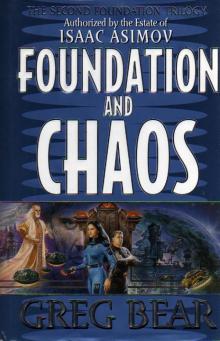 Foundation and Chaos
Foundation and Chaos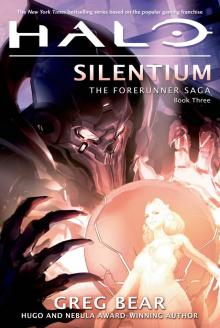 Halo: Silentium
Halo: Silentium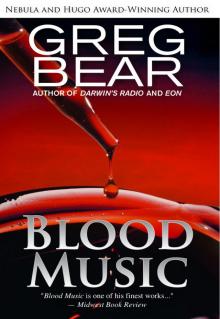 Blood Music
Blood Music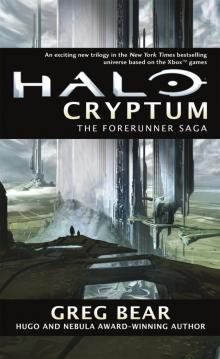 Halo: Cryptum
Halo: Cryptum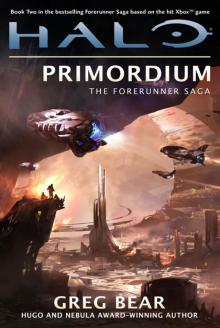 Halo: Primordium
Halo: Primordium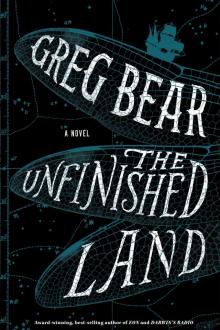 The Unfinished Land
The Unfinished Land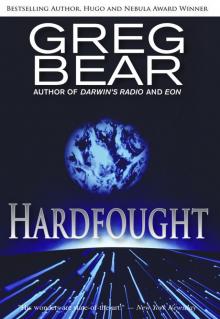 Hardfought
Hardfought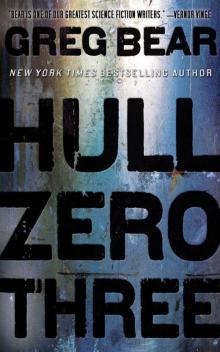 Hull Zero Three
Hull Zero Three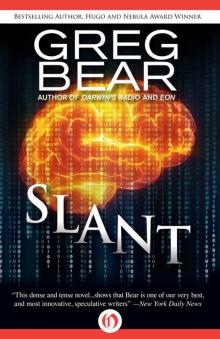 Slant
Slant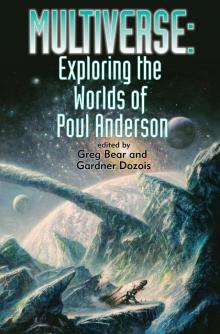 Multiverse: Exploring the Worlds of Poul Anderson
Multiverse: Exploring the Worlds of Poul Anderson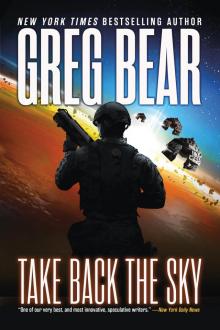 Take Back the Sky
Take Back the Sky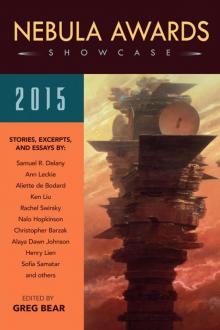 Nebula Awards Showcase 2015
Nebula Awards Showcase 2015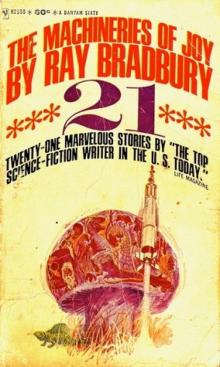 Machineries Of Joy
Machineries Of Joy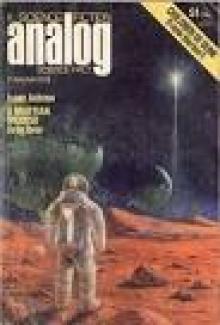 A Martian Ricorso
A Martian Ricorso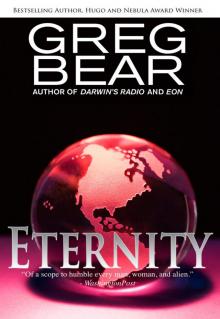 Eternity
Eternity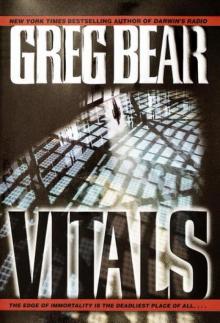 Vitals
Vitals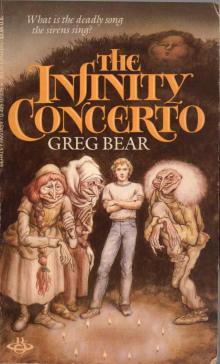 The Infinity Concerto
The Infinity Concerto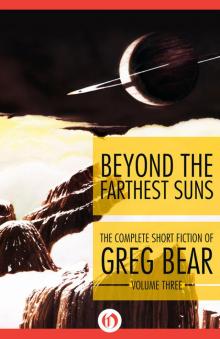 Beyond the Farthest Suns
Beyond the Farthest Suns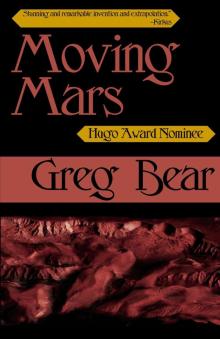 Moving Mars
Moving Mars Quantico
Quantico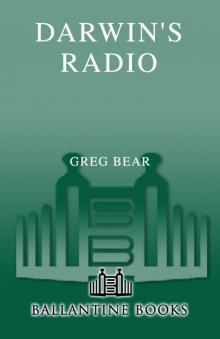 Darwin's Radio
Darwin's Radio Beyond Heaven's River
Beyond Heaven's River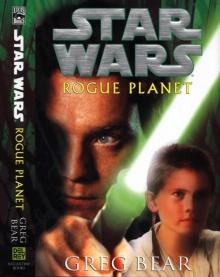 Star Wars - Rogue Planet
Star Wars - Rogue Planet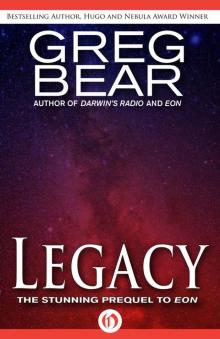 Legacy (Eon, 1)
Legacy (Eon, 1) War Dogs: Ares Rising
War Dogs: Ares Rising Sisters
Sisters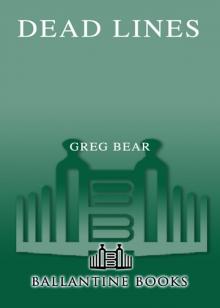 Dead Lines
Dead Lines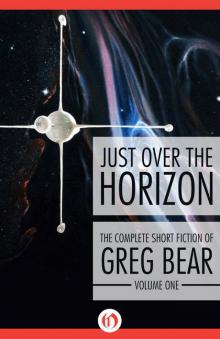 Just Over the Horizon (The Complete Short Fiction of Greg Bear Book 1)
Just Over the Horizon (The Complete Short Fiction of Greg Bear Book 1)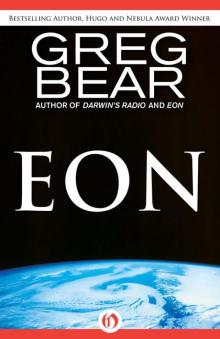 Eon (Eon, 2)
Eon (Eon, 2)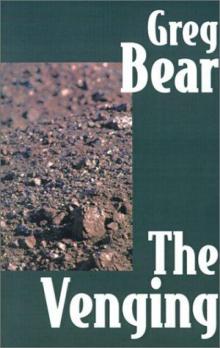 Venging
Venging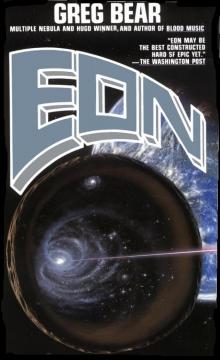 Eon
Eon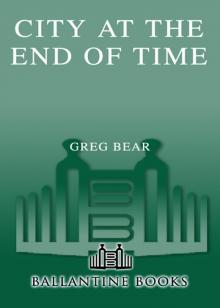 City at the End of Time
City at the End of Time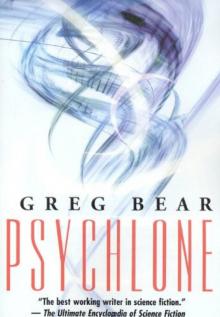 Psychlone
Psychlone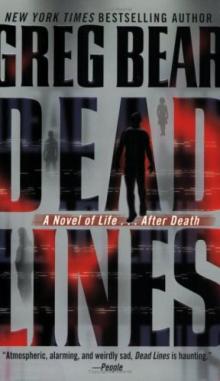 Dead Lines, A Novel of Life... After Death
Dead Lines, A Novel of Life... After Death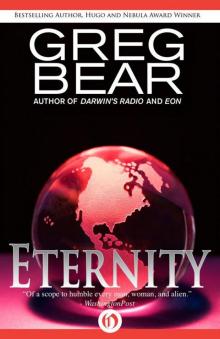 Eternity (Eon, 3)
Eternity (Eon, 3) Cryptum
Cryptum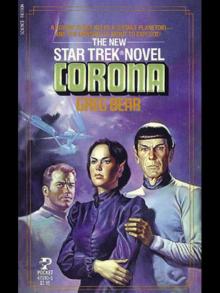 Corona
Corona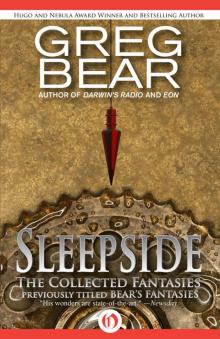 Sleepside: The Collected Fantasies
Sleepside: The Collected Fantasies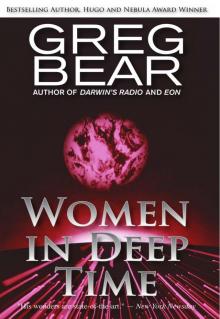 Women in Deep Time
Women in Deep Time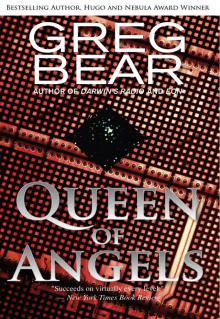 Queen of Angels
Queen of Angels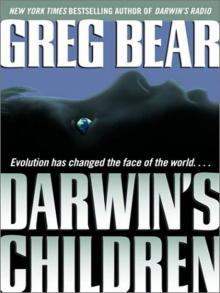 Darwin's Children
Darwin's Children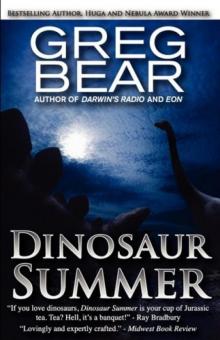 Dinosaur Summer
Dinosaur Summer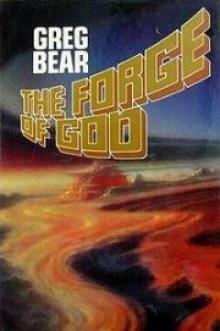 The Forge of God tfog-1
The Forge of God tfog-1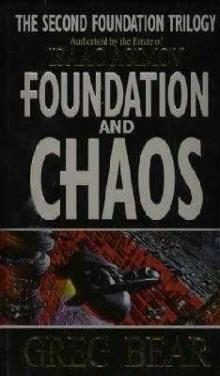 Foundation and Chaos f-9
Foundation and Chaos f-9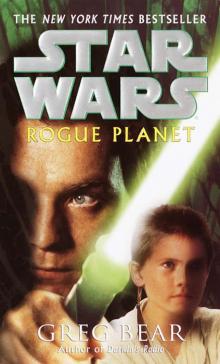 Star Wars: Rogue Planet
Star Wars: Rogue Planet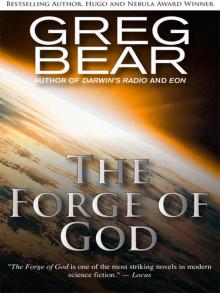 The Forge of God
The Forge of God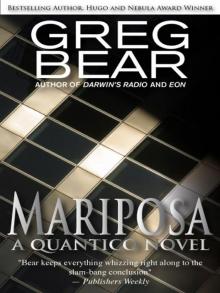 Mariposa
Mariposa Halo: Cryptum: Book One of the Forerunner Saga
Halo: Cryptum: Book One of the Forerunner Saga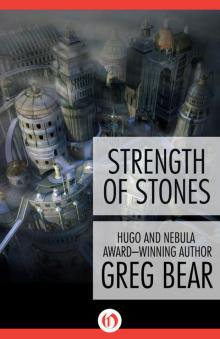 Strength of Stones
Strength of Stones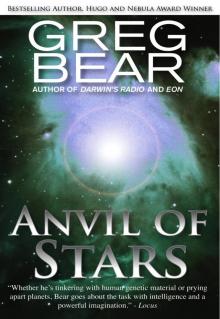 Anvil of Stars
Anvil of Stars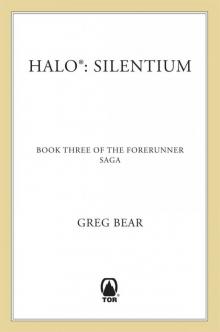 B00AQUQDQO EBOK
B00AQUQDQO EBOK Anvil of Stars tfog-2
Anvil of Stars tfog-2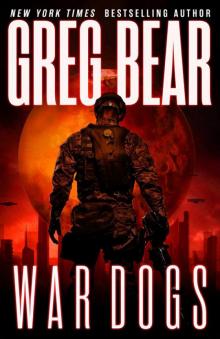 Ares Rising 1: War Dogs
Ares Rising 1: War Dogs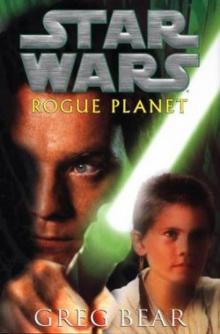 Rogue Planet (star wars)
Rogue Planet (star wars)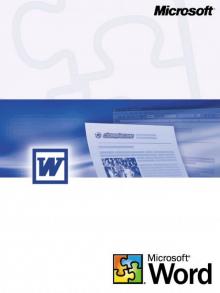 The Machineries of Joy
The Machineries of Joy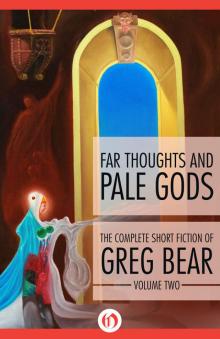 Far Thoughts and Pale Gods
Far Thoughts and Pale Gods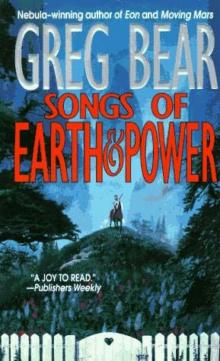 Songs of Earth and Power Omnibus
Songs of Earth and Power Omnibus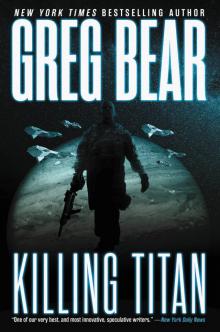 Killing Titan
Killing Titan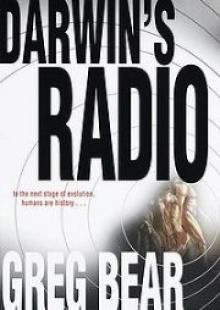 Darwin's Radio d-1
Darwin's Radio d-1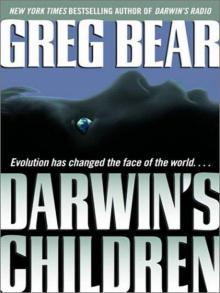 Darwin's Children d-2
Darwin's Children d-2